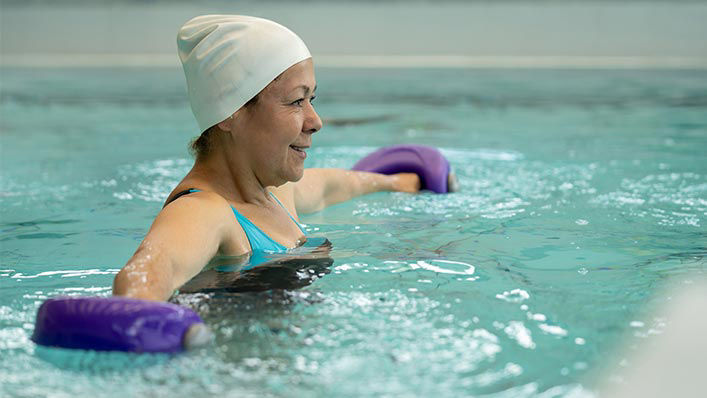Tendonitis and bursitis
Treating tendonitis and bursitis for long-term relief
Tendonitis and bursitis are painful inflammatory conditions that affect the soft tissues that help you move, making daily activities challenging. If you participate in sports, they can also take you out of your game. So it’s important to find the best treatment options available to help you get relief.
Tendonitis affects your tendons, which are fibrous cords that attach your muscles to your bones. Bursitis affects your bursae, which are thin, fluid-filled sacs that help cushion skin and tendons where they move over bone. Because the bursae and tendons are so close together, the conditions may go hand in hand, beginning and worsening together following frequent, repetitive movement. If left untreated, they can become chronic conditions affecting your foot, shoulder, knee, hand, elbow or hip.
At TRIA, our team of
What are the symptoms of tendonitis and bursitis?
Tendonitis and bursitis can occur in many parts of your body, sometimes in a few places at once. Pain is often worse during and after physical activity. Symptoms may include:
- Pain
- Stiffness
- Tenderness
- Difficulty moving or loss of motion
- Redness, swelling and being warm to the touch
What causes tendonitis and bursitis?
Both bursitis and tendonitis may be brought on by frequent, repetitive movements or injury. The conditions can occur throughout your body but are most commonly found around major joints like your shoulder, knee, elbow or hip. The kinds of activities you participate in or the job you have can determine which area is affected.
For instance, if you’re an avid tennis player, prolonged pressure on your shoulder due to serving or quickly swinging your racquet may cause inflammation in your body’s bursae or stress your tendons – causing tendonitis and bursitis to develop.
Treating tendonitis and bursitis
If you’re experiencing tendonitis or bursitis, our team of orthopedists can help you. We use leading treatment options to help you find relief, including many nonsurgical options. Common treatments include:
Medication
Depending on your diagnosis, we might recommend anti-inflammatory medications, including corticosteroid injections to help with your pain and to help limit swelling, irritation or inflammation.
Physical therapy
Orthotics and prosthetics
Our team provides custom fitting of orthopedic braces,
Orthobiologics
TRIA is at the forefront of
Orthobiologic treatments can be used instead of surgery or in addition to surgery. While there are many different types of orthobiologic therapies, platelet rich plasma (PRP) injections are the most commonly used orthobiologic treatment.
Surgical treatment options
If the pain caused by tendonitis or bursitis continues despite more conservative treatment options such as physical therapy, surgery may be the most effective option.
The most common surgery for bursitis is a bursectomy, which removes the inflamed bursa to help relieve pain and promote healing. If you need tendonitis surgery, our doctors will find the best treatment option to help repair your tendon and improve its functionality, including arthroscopic and full- and partial-tear repairs. Our team treats a variety of tendonitis conditions, including tennis elbow, with effective results, and will guide you at each step.

Aquatic therapy for tendonitis and bursitis
Our Aquatic Therapy Program is just one of the ways we help patients suffering from an acute or chronic condition. It uses water’s natural therapeutic properties of resistance and warmth to help heal your joints and tendons.
